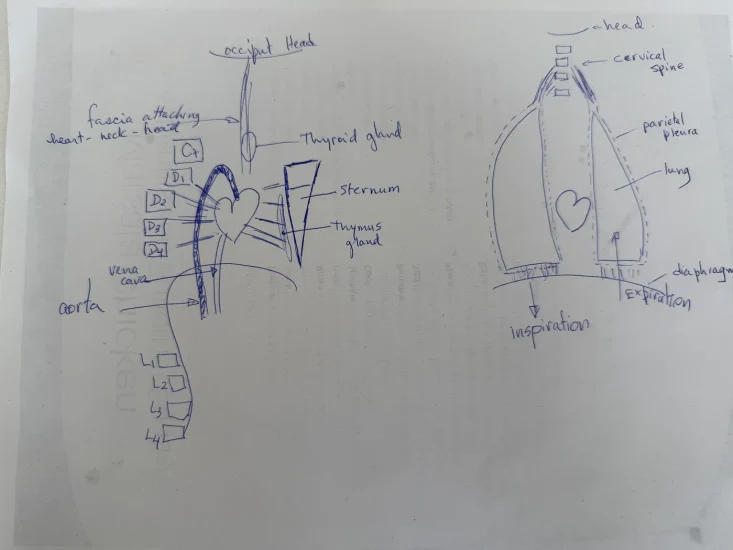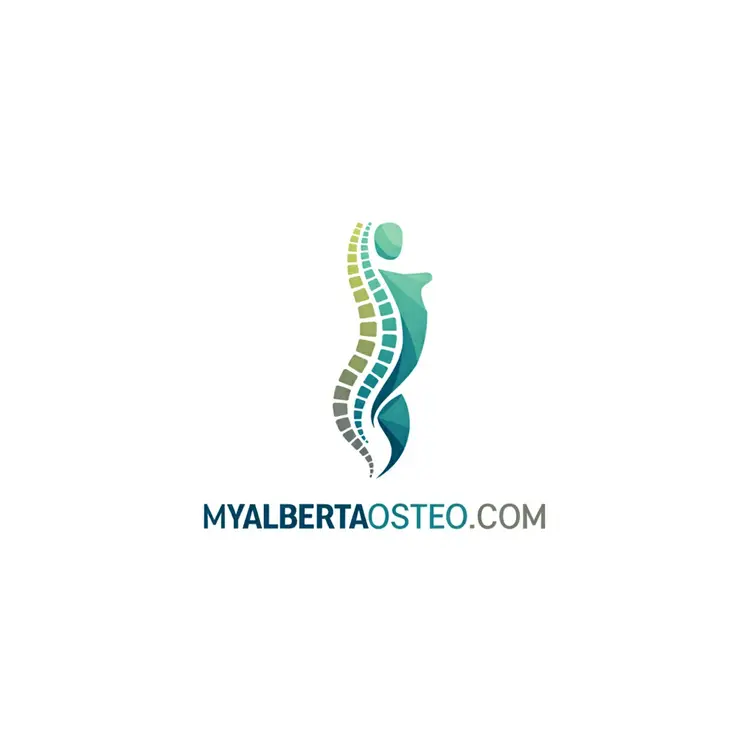The “Short Tie” Syndrome: A Common Postural Reality
Over the past 30 years of practicing physiotherapy and osteopathy, I’ve treated countless patients suffering from neck, shoulder, or upper back pain. Many of them complain about discomfort during the night, often blaming their pillow — one patient even joked that she could open a store with the number of pillows she’s tried! I’ve also worked with individuals suffering from severe cervical disc herniations, including nerve root compressions and numbness in one or more fingers. In several of these cases, symptoms such as numbness and pain subsided significantly after targeted treatment.
My approach to treating these conditions focuses on restoring mobility not only between the head and the cervical spine, but also between the cervical spine and the thoracic region.
These areas work in synergy, and dysfunction in one can cause issues elsewhere in the body.

Functional Anatomy and Fascial Chains
The human body is structured around fascial systems — intricate networks of connective tissue that transmit forces, tension, and movement throughout the body. I often compare fascia to a thin plastic film that travels continuously through the body. One of the deep fascial chains begins at the thoracic diaphragm, continues through the parietal pleura (the membrane surrounding the lungs), moves upward to the pleural dome (the upper portion of the lungs), and connects via the scalene muscles to the lateral neck, ultimately anchoring at the side of the head. In other words, the lungs are “suspended” from the base of the neck by these musculo-fascial attachments.
Jean-Pierre Barral, a renowned osteopath and founder of visceral manipulation in the 1970s — whom I had the privilege of studying with in January 2022 — emphasizes in his book on the thorax that chronic pulmonary issues (like asthma or recurrent respiratory infections) are often linked to premature wear and tear in the cervical joints (osteoarthritis).
Another key fascial structure is the middle cervical fascia. This sheath envelops the heart, thymus (an immune-related gland particularly active in children and the elderly), and major blood vessels. It attaches to the back of the sternum and the front of the first four thoracic vertebrae, extending up through the throat and anchoring at the base of the skull (occiput). Tension in this chain can restrict mobility in the cervico-thoracic junction, affect sternum movement, and alter overall posture.
Modern Posture: The “Short Tie” Syndrome
The term “short tie syndrome” came to mind as I observed other drivers sat red lights — their chins jutting forward, necks compressed into their rib cages, and upper backs rounded. This common postural pattern is often the result of deep fascial tension, exacerbated by modern habits such as desk work, prolonged phone use, and chronic stress.
My Therapeutic Approach
My treatment begins by restoring mobility in key structural areas: the occiput, cervical vertebrae C1 and C2, C7, the first few thoracic vertebrae (T1 to T4), and the first two ribs — all essential components of the cervico-thoracic junction.
I then focus on mobilizing the deep myofascial chains mentioned earlier, including those connected to the sternum, heart, thymus, anterior thoracic spine, neck, and head. This integrative approach helps release global tension that restricts local movement.
The Importance of the Cranium and the Posterior Chain
Cranial assessment is essential, particularly through craniosacral therapy. The skull is not a rigid structure — it’s made of various bones that should maintain subtle but vital mobility, like a 3D puzzle. This movement supports the relaxation of surrounding tissues, including neck muscles.
Finally, we must consider the influence of the posterior muscular chain, which runs from the pelvis to the skull and plays a key role in head posture. A restriction at any point along this chain can affect the whole body, leading to pain and compensations in other regions.
Book an appointment in Calgary or Canmore
